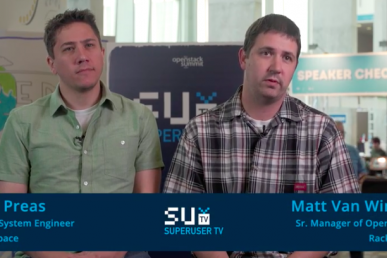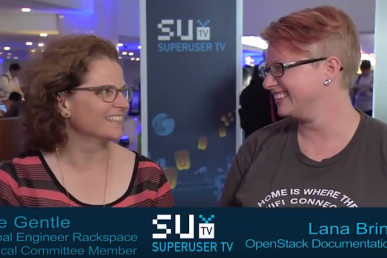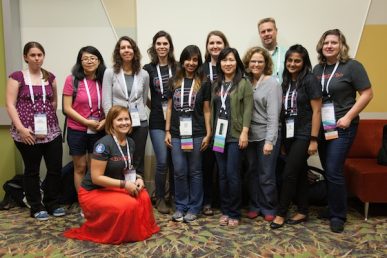You never know where a conversation in the hallway might lead you.
Between sessions at the 2014 OpenStack Summit Paris, Anne Gentle spied something she didn’t recognize on Justin Shepherd’s smartphone. “I’m a curious one,” says Gentle, a principle engineer at Rackspace, so she asked him about it.
From thousands of miles away, Shepherd, a distinguished architect for Rackspace Private Cloud, was keeping an eye his wife’s health while she slept in Texas. After a decade of monitoring her Type 1 diabetes, she was pregnant.
“You almost are both diabetic at that point. All of your conversations revolve around her blood sugar. Are you too high, are you too low? When did you last eat? Do I need to get you some sugar? Are you starting to pass out in the middle of the night? Do I need to get you some orange juice? Let’s take care of all of your blood glucose,” Shepherd says. “That becomes a big part of your life.”
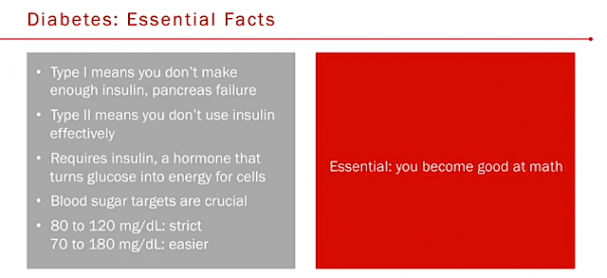
The trip to Paris complicated that vital monitoring process. Before leaving, Shepherd investigated how he could check on her remotely and realized that the Dexcom Continuous Glucose Monitoring device, or Dexcom CGMS, she was using had a service called Dexcom Share, which allows you to take data from the Dexcom CGMS, send it to an iPod-like device and connect that to your smartphone via Bluetooth. The proprietary set-up costs about $400, plus a monthly fee, he says.
His strategy resonated with Gentle, whose son Evan had been diagnosed at age 11 with Type 1 diabetes after the sugary funnel of a Pixy Stick sent him to the emergency room.
“I was trying to figure out how to give my son more control and at the same time, train him. He’s going to middle school this year, he should have more independence. How can we give that to him? I know we can manage this with technology…I have access to a lot of cloud,” Gentle says. “Would you rather have your kid, your wife, your friend, pricking fingers five times a day, or go ahead and get data every five minutes? That’s what continuous glucose monitoring (CGM) gives you…We have to emphasize how valuable this is in controlling this disease. ”
Shepherd and Gentle got to talking and realized they could do better. Essentially, the Dexcom CGMS was just connecting a couple of devices and providing those data points. The person monitoring has just a trend line and can set some alarms, but a lot of things affect diabetes control. “If you exercise, that actually drops your blood sugar. When you give yourself insulin, it drops your blood sugar, when you eat, it takes your blood sugar up,” Shepherd says. “There’s all this data that would be really interesting to put together and wouldn’t it be amazing if there were an open-source solution to this?”
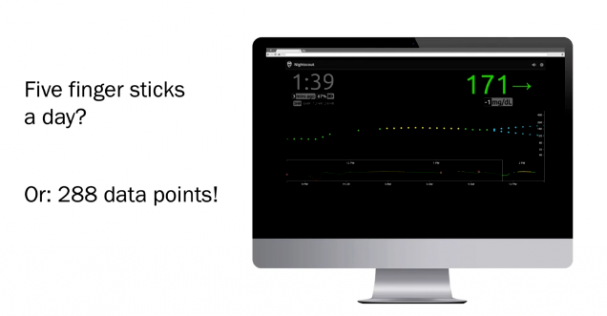
Gentle’s research led her to John Costik, software developer and father of a son also named Evan, an original member of the CGM in the cloud team of a nonprofit called the Nightscout Foundation. Nightscout is an open source, DIY project that allows real-time access to a CGM data via personal website, smartwatches and smartphone apps and widgets. The project’s original approach to collect the data required an Android phone attached to the CGM receiver, but the project now has a REST API for collecting and displaying data.
She found inspiration in Nightscout’s rallying cry, the slogan “We Are Not Waiting.” As in “not waiting for a proprietary solution, not waiting for a company to market a product but reverse-engineering the system to figure out how to make it work for their needs today,” Gentle says. A Stanford diabetes data hackathon gave birth to the slogan in 2013 which quickly gained momentum as a Twitter hashtag, #WeAreNotWaiting.
Her son’s current set-up is a combination of proprietary and open-source solutions. Evan wears a sensor on his arm or backside and carries the small Dexcom device — not too heavy for a sixth grader to stick in his pocket all the time. The device pairs with his iPhone and the Nightscout web application (Node.js connected to a MongoDB database) running on an OpenStack cloud server hosted at Rackspace. Gentle says that there were some initial head scratchers with the data — you have to rely on common sense sometimes if the numbers don’t quite look right — but overall it’s given her peace of mind. She and her husband can watch their son’s blood sugar on a Pebble, a smartwatch or smartphones.
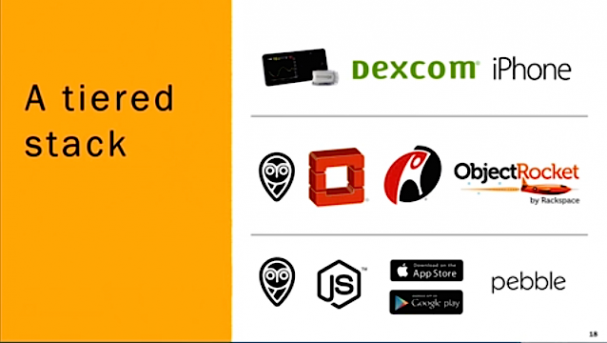
“This has been amazing because I can have a babysitter come in and just tell her, ‘Go to this webpage on your phone and you can watch his blood sugar too and just make sure he’s in safe ranges,’” Gentle says.
In the process of putting together her son’s set-up, she learned a lot about what it means to run an app on OpenStack, how to get everything working together and reliable enough to stay running. The result is a tiered application stack with multiple open source projects working together and multiple proprietary solutions working together.
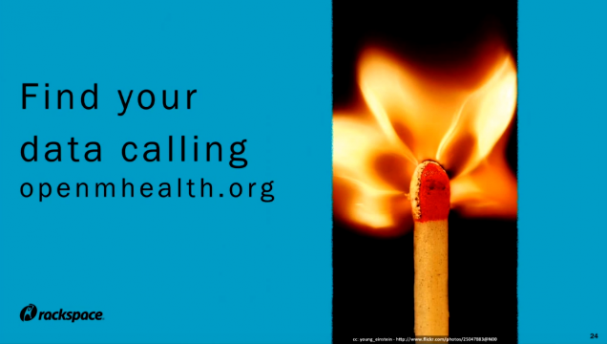
“Our hope is to inspire you to look into open source, to think of ways to solve the data problems that you might have already,” Gentle says. “Let’s not wait for someone else to solve it. The OpenStack community is especially good at thinking this way.”
Shepherd and Gentle teamed up to show how they’re monitoring their nearest and dearest (and how to avoid being worst helicopter relative, ever) at the Summit Tokyo. Catch the complete 37-minute talk on the OpenStack Foundation’s YouTube channel.
Cover Photo // CC BY NC
- OpenStack Homebrew Club: Meet the sausage cloud - July 31, 2019
- Building a virtuous circle with open infrastructure: Inclusive, global, adaptable - July 30, 2019
- Using Istio’s Mixer for network request caching: What’s next - July 22, 2019

)




